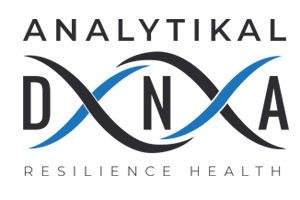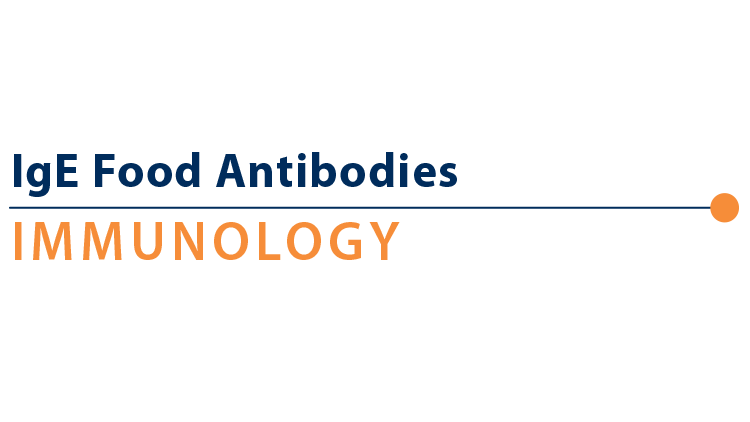Description
Identify True Food Allergies
The IgE Food Antibody Assessment is a blood test that measures IgE antibodies to 19 of the most allergenic foods. The panel also includes a total IgE measurement. The body can react to foods in many different ways. The prevalence of food allergies in Western countries is rising, with up to 10% of the population affected. This trend likely involves a complex interplay between genetic, epigenetic, and environmental risk factors.1
When should testing for IgE Food Antibodies be considered?
Testing for IgE food antibodies is useful for individuals who suspect that a food is responsible for causing their symptoms. The presence of circulating antibodies may affect each patient differently. According to the American Academy of Allergy, Asthma, and Immunology, “A key message is that a positive allergy test result (skin or blood) indicates only the presence of allergen-specific IgE (called sensitization). It does not necessarily mean clinical allergy (i.e., allergic symptoms with exposure).”2 Therefore, test results should always be viewed in the context of the overall clinical picture.
Conditions associated with IgE food allergy
- Hives or red, itchy skin
- Stuffy or itchy nose, sneezing or itchy, teary eyes
- Vomiting, stomach cramps or diarrhea
- Angioedema or swelling
- Shortness of breath or wheezing
- Anaphylaxis
Risk factors associated with IgE food allergies
Certain allergy risk factors cannot be modified including male sex in children, race/ethnicity (increased among Asian and black children compared with white children), and genetics (familial associations, HLA, and specific genes). However, the following risk factors can be addressed to reduce/prevent food allergy:1
- Increased hygiene
- Microbiome imbalance
- Atopic disease manifestations (comorbid atopic dermatitis)
- Vitamin D insufficiency
- Dietary fat (reduced consumption of omega-3-polyunsaturated fatty acids)
- Reduced consumption of antioxidants
- Increased antacid use (reducing digestion of allergens)
- Obesity (being in an inflammatory state)
- Timing and route of exposure to foods
Ordering the test
The IgG Food Antibody Panel can be ordered as a stand-alone test or bundled with other profiles. Often times, clinicians will bundle several smaller profiles in order to see a more complete picture of the patient’s immune-mediated response. Profiles that can be bundled include:
| Profile | Includes |
| IgG Foods | 87 foods plus total IgE |
| IgG Vegetarian | 21 foods plus total IgE |
| IgG Spices | 23 spices plus total IgE |
| IgE Foods | 19 foods plus total IgE |
| IgE Molds | 15 molds plus total IgE |
| IgE Inhalants | 16 inhalants specific to 18 North American geographic regions plus total IgE |
| Celiac and Gluten Sensitivity | Total IgA, tTG IgA, DGP IgA, EMA IgA, Anti-Gliadin IgG & IgA |
What advantage does the IgE Food Antibody test offer compared to other diagnostics?
An IgE allergic response involves immediate-hypersensitivity to a substance. It is generally easier for patients and clinicians to identify a food that causes an immediate response, although not always, and testing serum IgE antibodies can be helpful.
The National Institute of Allergy and Infectious Disease (NIAID) guidelines state that a combination of medical history, physical examination, and oral food challenge can assist in the diagnosis of food allergy, with the oral food challenge being the gold standard.3 In some instances, an oral food challenge may be dangerous for the patient and other tools may be helpful.
A skin-prick test involves the injection of an allergen on the skin then observation for a reaction. This method has low specificity and low positive predictive value,3 and the injection of a substance that can potentially cause a serious reaction should be monitored closely. Serum testing can be especially useful when skin-prick tests cannot be performed (for example, due to extensive dermatitis or dermatographism), or when antihistamines cannot be discontinued.
Allergen-specific serum IgE testing does not involve introducing an allergen in order to test. Instead, already circulating antibodies are measured, however, the patient must have been exposed to the allergen in the days leading up to testing in order to detect antibodies. The NIAID suggests, “sIgE tests are useful for identifying foods potentially provoking IgE-mediated food-induced allergic reactions and specified “cutoff” levels, defined as 95% predictive values, may be more predictive than skin prick tests of clinical reactivity in certain populations, but when used alone they are not diagnostic of food allergy.”3
Genova’s Methodology
IgE Antibody Testing
Genova utilizes the FDA-cleared Siemans Immulite® 2000 Total IgE and 3gAllergy Specific IgE Universal Kits. Immulite® 2000 Total IgE is a solid-phase Chemiluminescent assay. Immulite® 3gAllergy Specific IgE is a solid phase, two-step, chemiluminescent immunoassay that exploits liquid phase kinetics in a bead format. Siemens proprietary liquid allergens are the key to making IMMULITE® 2000 Immunoassay allergy tests sensitive, specific, and reliable. The soluble polymer/copolymer support for the allergens increases the number of binding sites and their accessibility to allergen-specific IgE antibodies. Enzyme-enhanced chemiluminescent signal detection provides increased sensitivity and the proprietary wash technique enhances specificity.
What can clinicians and patients expect from IgE Food Antibody testing?
In general, clinical management of the patient with food allergies involves the elimination of offending food(s). Modifiable risk factors (see above) may simultaneously be addressed with diet, botanicals, nutraceuticals, and lifestyle changes.


